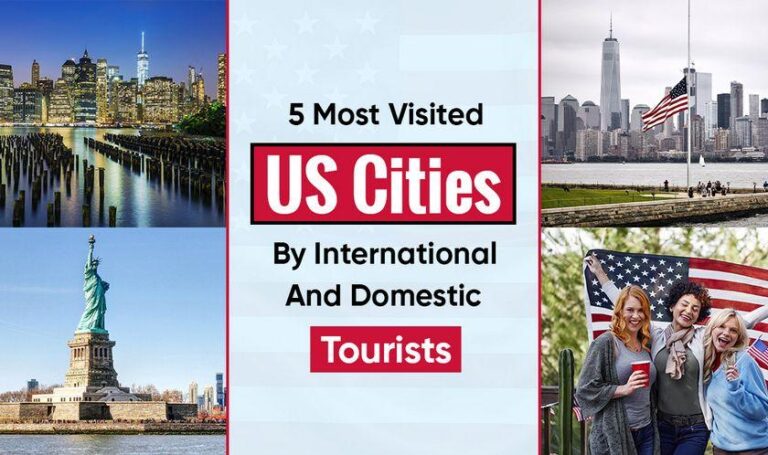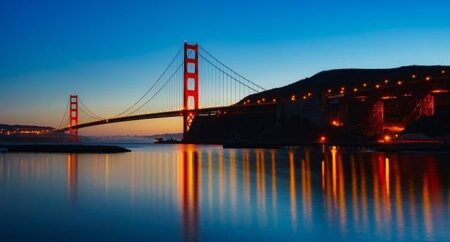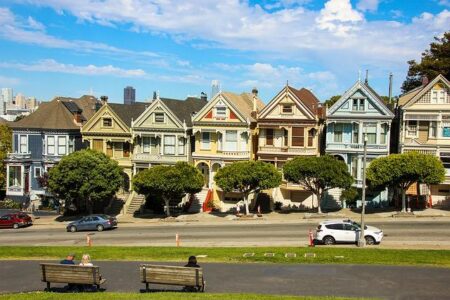Leading U.S. Cities Captivating Tourists and Business Travelers in 2024
Urban Destinations Capturing the Hearts of Visitors Nationwide
As travel surges back to pre-pandemic levels, numerous American cities have distinguished themselves as premier spots for both leisure and business travelers. The latest insights from Business Insider reveal a dynamic shift in travel patterns, highlighting cities that blend cultural richness, economic vitality, and unique attractions. From the energetic streets of New York City to the sun-soaked shores of Miami, these urban centers are welcoming millions, influencing the evolving landscape of U.S. tourism in 2024.
Each city offers a distinct allure that goes beyond conventional sightseeing. For example, Los Angeles remains a magnet for entertainment enthusiasts with its behind-the-scenes studio tours and celebrity hotspots, while Miami enchants visitors with its lively nightlife and iconic Art Deco district. Other cities stand out for their blend of history, innovation, and natural beauty.
Key factors that keep tourists returning include:
- Signature festivals and cultural events that celebrate local heritage and creativity.
- Eclectic dining options showcasing international and regional cuisines.
- Outdoor recreational opportunities such as urban parks, waterfronts, and hiking trails.
- Thriving arts and music communities that offer year-round entertainment.
| City | Signature Attraction | Visitor Draw |
|---|---|---|
| New York City | Empire State Building, Broadway Shows | Historic landmarks & world-class theater |
| Las Vegas | The Strip, Entertainment Shows | Vibrant nightlife & gaming |
| San Francisco | Golden Gate Bridge, Alcatraz Island | Scenic vistas & tech innovation |
| Chicago | Millennium Park, Navy Pier | Architectural marvels & lakefront activities |
Tourism’s Economic Contributions in Major U.S. Cities
The steady influx of visitors to America’s busiest cities is a vital economic driver, fueling growth across multiple sectors. In metropolitan areas like New York, Los Angeles, and Miami, tourism injects billions into hospitality, retail, transportation, and entertainment industries. This spending supports thousands of jobs, from hotel staff to local artisans, and sustains small businesses that thrive on seasonal travel peaks.
Moreover, tourism-generated revenue enhances municipal budgets through taxes, enabling investments in infrastructure and public amenities. These cities capitalize on their global appeal to attract both domestic and international tourists, creating a multiplier effect that benefits urban development and community services. Below is a snapshot of estimated annual tourism income and its primary economic impact by city:
| City | Estimated Annual Tourism Revenue | Key Economic Sector |
|---|---|---|
| New York | $72 billion (2023 estimate) | Hospitality & Entertainment |
| Los Angeles | $47 billion | Retail & Transportation |
| Miami | $34 billion | Hospitality & Leisure |
| Chicago | $30 billion | Conventions & Events |
| San Francisco | $27 billion | Technology & Tourism Services |
Exploring Lesser-Known Attractions: Unique Urban Experiences
While landmarks like Times Square and the Golden Gate Bridge remain perennial favorites, many cities offer hidden treasures that provide fresh perspectives and authentic encounters. For example, Atlanta’s Oakland Cemetery combines lush Victorian gardens with rich historical narratives, offering a peaceful retreat from the city’s hustle. In Austin, the Cathedral of Junk stands as a testament to creative reuse, constructed entirely from recycled materials and embodying the city’s eclectic spirit.
Travelers seeking immersive cultural experiences can explore vibrant neighborhoods often overlooked by mainstream tours. Chicago’s Pilsen neighborhood bursts with colorful murals and genuine Mexican cuisine, while Seattle’s Ballard Locks showcases impressive engineering alongside opportunities for wildlife observation. These hidden gems invite visitors to connect more deeply with the local culture and environment.
- Oakland Cemetery, Atlanta: Historic garden cemetery with artistic monuments
- Cathedral of Junk, Austin: Innovative sculpture made from repurposed objects
- Pilsen District, Chicago: Street art and authentic Mexican dining
- Ballard Locks, Seattle: Maritime engineering and scenic nature views
| City | Hidden Attraction | Notable Feature |
|---|---|---|
| Atlanta | Oakland Cemetery | Historic gardens and monuments |
| Austin | Cathedral of Junk | Creative recycled art installation |
| Chicago | Pilsen District | Vibrant murals and authentic cuisine |
| Seattle | Ballard Locks | Engineering feat with wildlife viewing |
Effective Strategies for Navigating America’s Most Crowded Cities
Successfully exploring bustling U.S. cities requires thoughtful planning to maximize time and minimize stress. Utilizing public transportation systems‚ÄĒsuch as subways, light rails, and dedicated bus lanes‚ÄĒcan help travelers avoid traffic congestion. Peak travel times often include early mornings and late evenings, so scheduling key activities during these windows can improve efficiency. Ride-sharing platforms with carpool options offer cost-effective and quicker alternatives during rush hours. Additionally, carrying a portable charger and installing city transit apps ensures access to real-time updates, enhancing travel convenience.
For those who prefer active exploration, renting bikes or electric scooters provides a flexible way to bypass traffic and discover hidden corners. Many cities, including New York and San Francisco, feature pedestrian-friendly zones and greenways that encourage walking and cycling. The table below summarizes transit effectiveness and optimal travel times in select major cities:
| City | Transit Effectiveness | Recommended Travel Times |
|---|---|---|
| New York | Excellent (Extensive Subway Network) | 6‚Äď9 AM, 7‚Äď10 PM |
| Los Angeles | Moderate (Bus & Metro Rail) | After 8 PM |
| Chicago | High (L Train & Bike Paths) | 7‚Äď10 AM, 6‚Äď9 PM |
- Download offline maps: Cellular signals may be weak in underground transit stations.
- Stay hydrated: Urban exploration often involves extensive walking, especially during warmer months.
- Wear supportive footwear: Comfortable shoes are essential for navigating transit and city streets.
Final Thoughts: The Future of Urban Tourism in the U.S.
As domestic travel continues its upward trajectory, these ten cities have solidified their status as premier destinations for a wide array of visitors. Their diverse offerings‚ÄĒfrom thriving business centers to cultural and historic landmarks‚ÄĒreflect evolving traveler interests and economic trends. Whether drawn by professional engagements, entertainment, or unique local experiences, tourists are reshaping the patterns of American travel. Monitoring these urban hubs offers valuable insights into the future of tourism, hospitality, and urban development across the nation.




